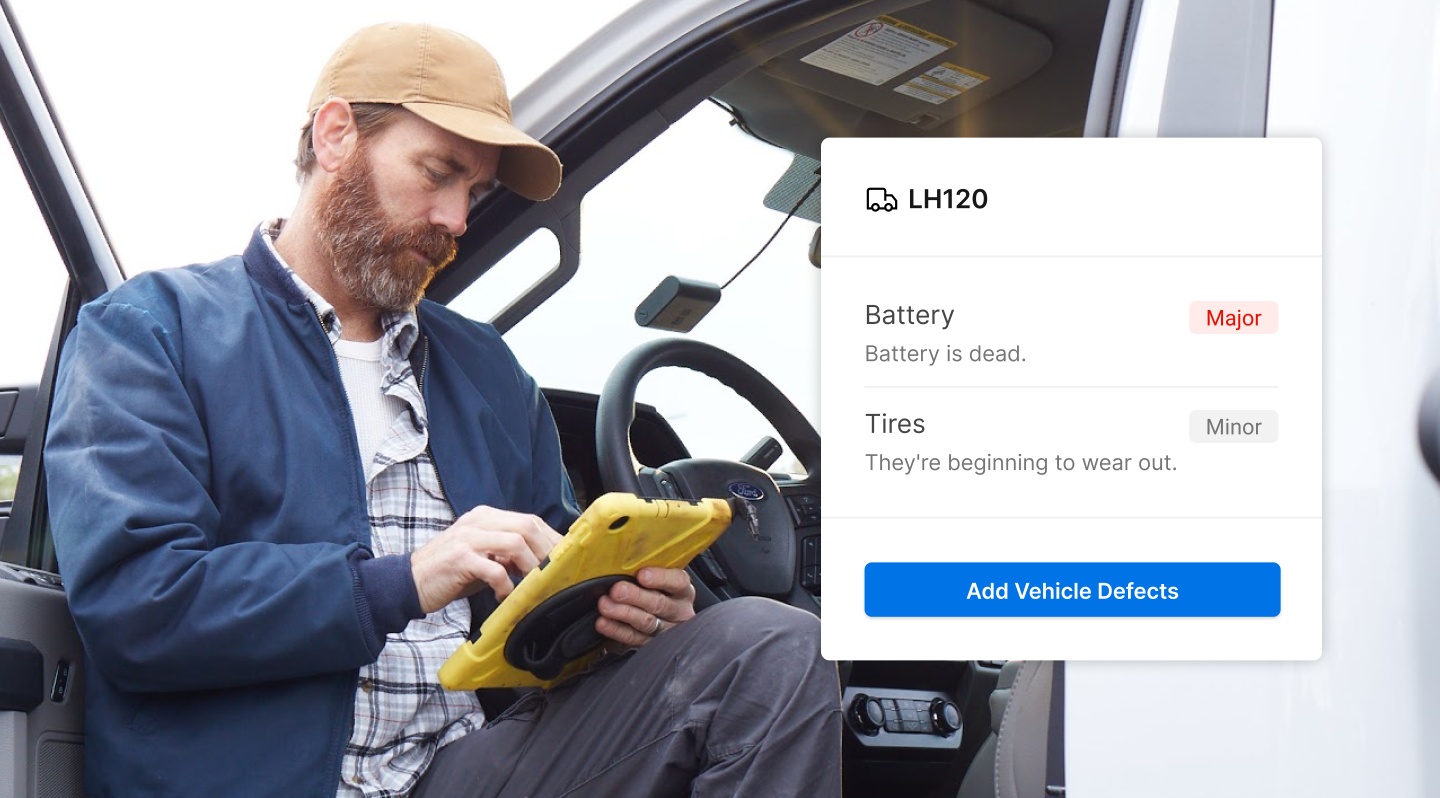A Commercial Driver’s License (CDL) puts drivers behind the wheel of vehicles such as tractor-trailers, flatbeds, and tankers. Before any trip, confirming road readiness is vital. A CDL pre-trip inspection checklist helps drivers systematically verify that key vehicle systems and components are in safe, working condition.
Our updated guide provides a fresh look at CDL pre-trip inspections for 2025, complete with a downloadable PDF checklist to make inspections faster and easier.
Why a CDL pre-trip inspection checklist matters
A CDL pre-trip inspection checklist is more than a formality — it’s a vital safety measure. The Federal Motor Carrier Safety Administration (FMCSA) mandates systematic inspections for commercial vehicles, confirming that they’re roadworthy. Drivers document their findings in a Driver Vehicle Inspection Report (DVIR) to maintain compliance. Beyond federal requirements, these inspections help to:
- Prevent accidents: Identifying and resolving issues while the vehicle is still parked minimizes risks.
- Avoid downtime: Early detection of potential problems reduces costly repairs and delays.
- Protect CSA scores: Keeping vehicles in top shape avoids penalties that impact Compliance, Safety, and Accountability (CSA) ratings.
- Cut costs: Proactive maintenance prevents failures that lead to fines or increased insurance premiums.
How to perform a CDL pre-trip inspection
Thorough inspections take about 15 to 30 minutes, but they’re an important part of safety and compliance. Here’s an updated breakdown of the key steps:
Front of the Truck
- Lights must be clean, secure, and functional.
- The truck should not lean.
- No leaks should be visible under the engine compartment.
Engine Compartment
- Fluid levels, including power steering, coolant, windshield washer fluid, and engine oil, should be at proper levels.
- Hoses, belts, and reservoirs must be securely connected and free from damage.
- The air compressor and alternator should be inspected for proper mounting.
Brakes
- Hoses, chambers, drums, and pads need to be secure and free from signs of wear.
- Slack adjusters should have no more than 1” of play.
- Brake pads must have at least ¼” thickness.
Wheels and Tires
- Tires should be inspected for cuts, bulges, or abrasions and must be properly inflated.
- Lug nuts must be tight, valve stems capped, and tire tread depth within acceptable limits.
- Wheel rims must have no unauthorized welds, and hub seals must be free from leaks.
Trailer and Coupling Area
- The trailer should have no holes, and all hardware and cross members must be intact.
- The fifth wheel platform, apron, and kingpin must be secure and undamaged.
- Landing gear and air lines must be properly mounted and fully operational.
Cab Check
- Seat belts must function properly.
- The parking brake should be engaged.
- Gauges, windshield wipers, and heating systems need to be operational.
- Emergency equipment, including fire extinguishers and reflective triangles, must be present and in good condition.
Common issues found during pre-trip inspections
Drivers often encounter problems during inspections, such as:
- A Leaning Truck: Tire pressure or suspension issues could be the cause.
- Broken Lights: Replace any cracked or non-functional lights immediately.
- Missing Gas Caps: A secure gas cap is required to pass inspections.
- Worn Tires: Substandard tread or visible bulges must be addressed before driving.
Simplifying inspections with digital tools
Modern technology makes CDL pre-trip inspections more efficient. Motive’s electronic Driver Vehicle Inspection Report (eDVIR) allows drivers to:
- Record inspection details on a smartphone or tablet.
- Upload photos to document issues.
- Share real-time updates with fleet managers.
- Access centralized inspection records for better fleet oversight.
Digital tools allow fleets to address issues promptly, maintain compliance, and keep vehicles operational without delays.
Download your CDL pre-trip inspection checklist
To make inspections even easier, download our updated CDL Pre-Trip Inspection Checklist PDF. The comprehensive guide covers all inspection points and includes space for notes and documentation, helping drivers and fleets stay organized and compliant.




